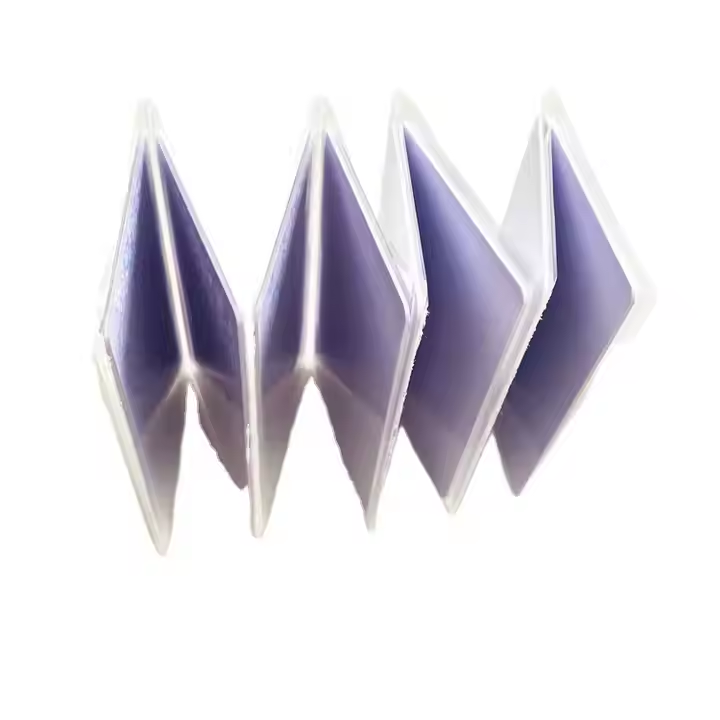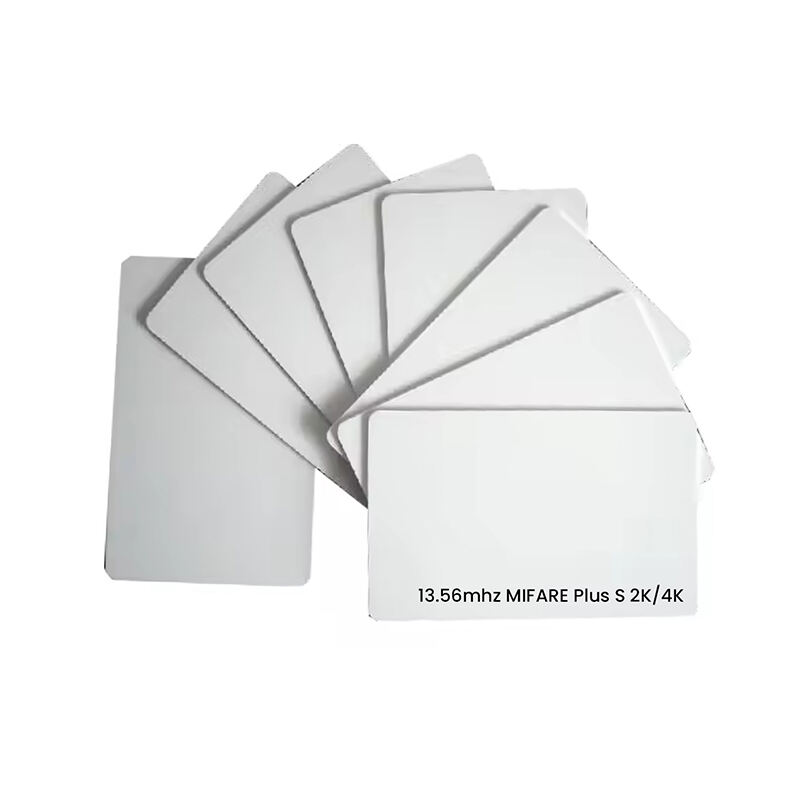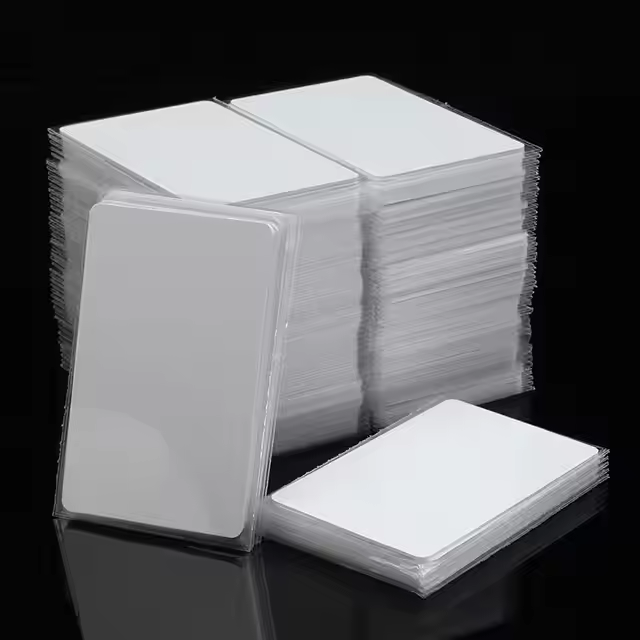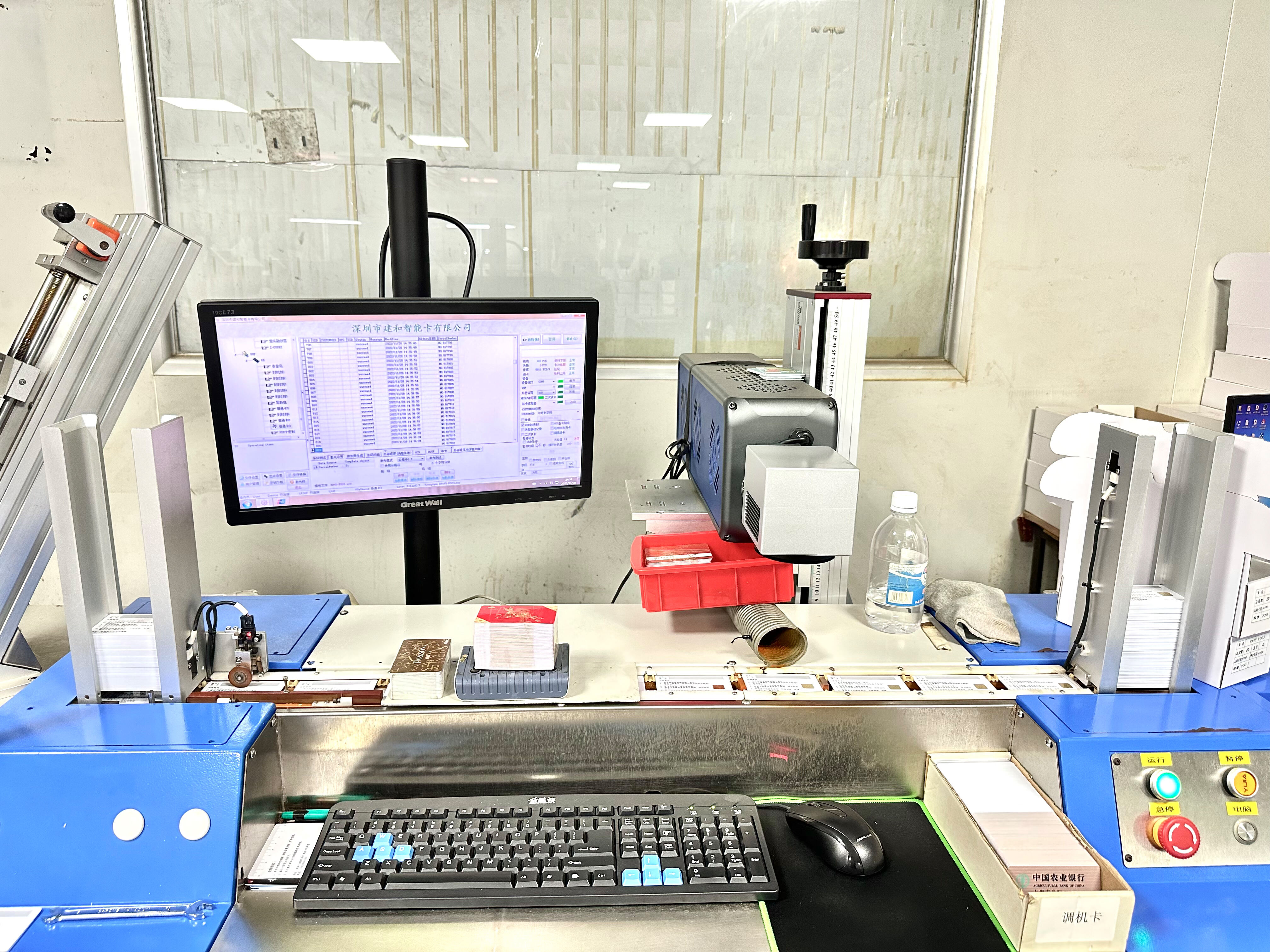- Overview
- Related Products
Product Introduction: 13.56MHz MIFARE Plus S 2K/4K PVC Blank Card
Dimensions: Standard CR80 size, 85.6 mm × 54 mm × 0.8 mm. Custom sizes available.
Material: High-quality PVC material, durable and waterproof.
Chip: NXP MIFARE Plus S 2K/4K.
Read Range: Up to 10 cm (depending on antenna design).
Surface Finish: Smooth surface, supporting multiple printing methods such as thermal transfer, screen printing, and UV printing.
Customization: Customizable size, shape, color, and print content (e.g., logo, QR code, serial number).
Operating Temperature: -20°C to 60°C.
Packaging: 200 cards per box, 1000 cards per carton.
Weight: Approximately 7 g per card.
Chip Information: 13.56MHz MIFARE Plus S 2K/4K
Memory Capacity:
- MIFARE Plus S 2K: 2 Kilobytes (2K).
- MIFARE Plus S 4K: 4 Kilobytes (4K).
Operating Frequency: 13.56 MHz.
Data Transfer Rate: Up to 848 kbps.
Protocol: ISO/IEC 14443-A.
UID Features: 7-byte unique UID or 4-byte non-unique NUID.
Security Features:
- Supports AES-128 encryption.
- Supports multi-application management and flexible access control.
Write Endurance: 200,000 cycles.
Data Retention: ≥10 years.
Application Scenarios
The MIFARE Plus S 2K/4K card, with its advanced security and flexibility, is suitable for various RFID applications that require high security and large storage capacity:
Access Control Systems: Suitable for enterprises, schools, residential communities, and other venues.
Transportation and Payment: Used as bus cards, subway cards, and smart door locks.
Membership Management: Used in shopping malls, gyms, clubs, and other membership systems.
Identity Verification: Used as employee ID cards, student IDs, and library cards.
Logistics and Supply Chain: Used for product tracking and inventory management.
Smart Payment: Used for small payments and mobile payment applications.
Notes
- The card requires a reader that supports the ISO/IEC 14443-A protocol.
- For custom printing, high-resolution vector files are required (e.g., AI or CDR formats). A color tolerance of ±5% is considered normal.

 EN
EN
 RU
RU DE
DE FR
FR JA
JA KO
KO ES
ES IT
IT PT
PT AR
AR












